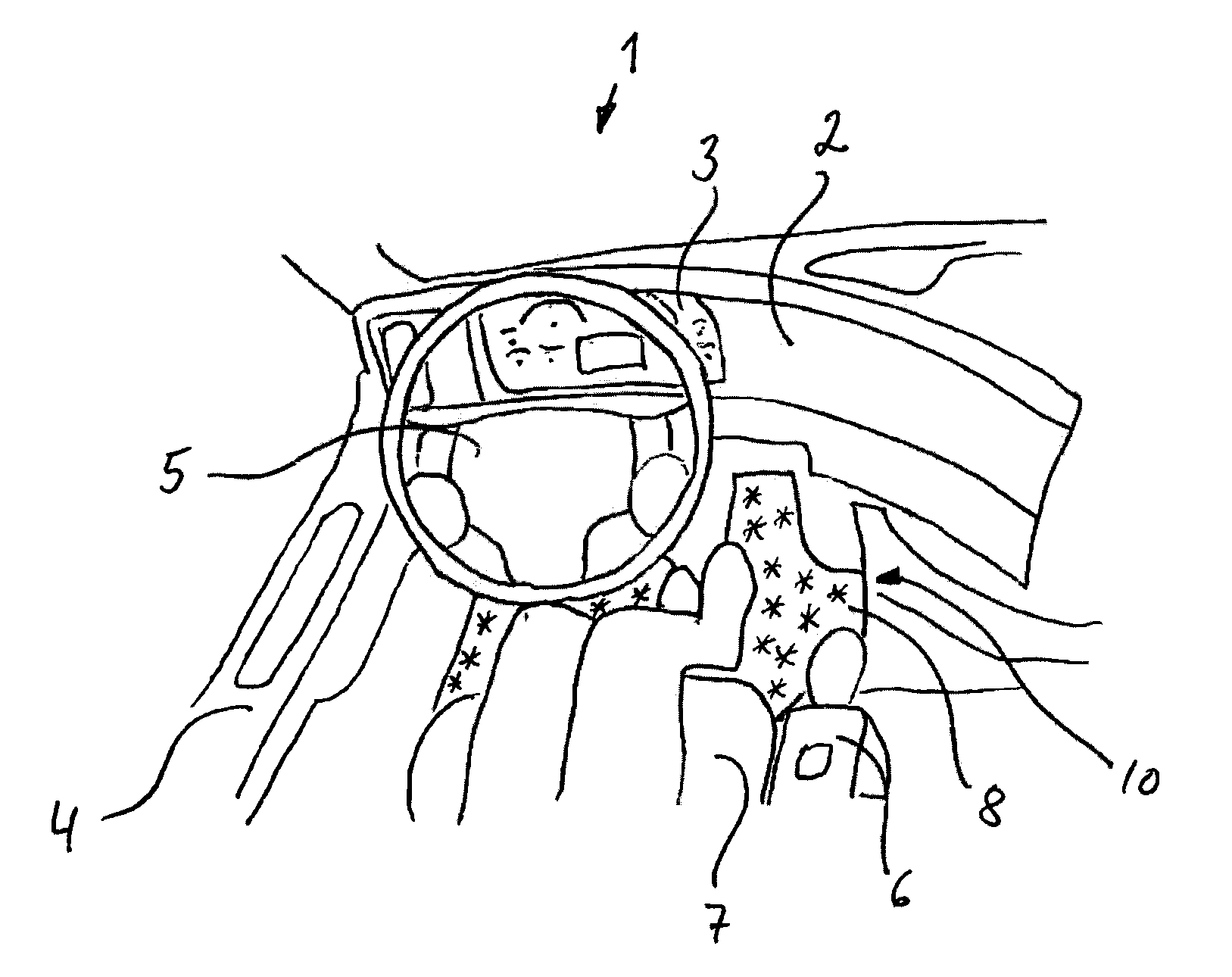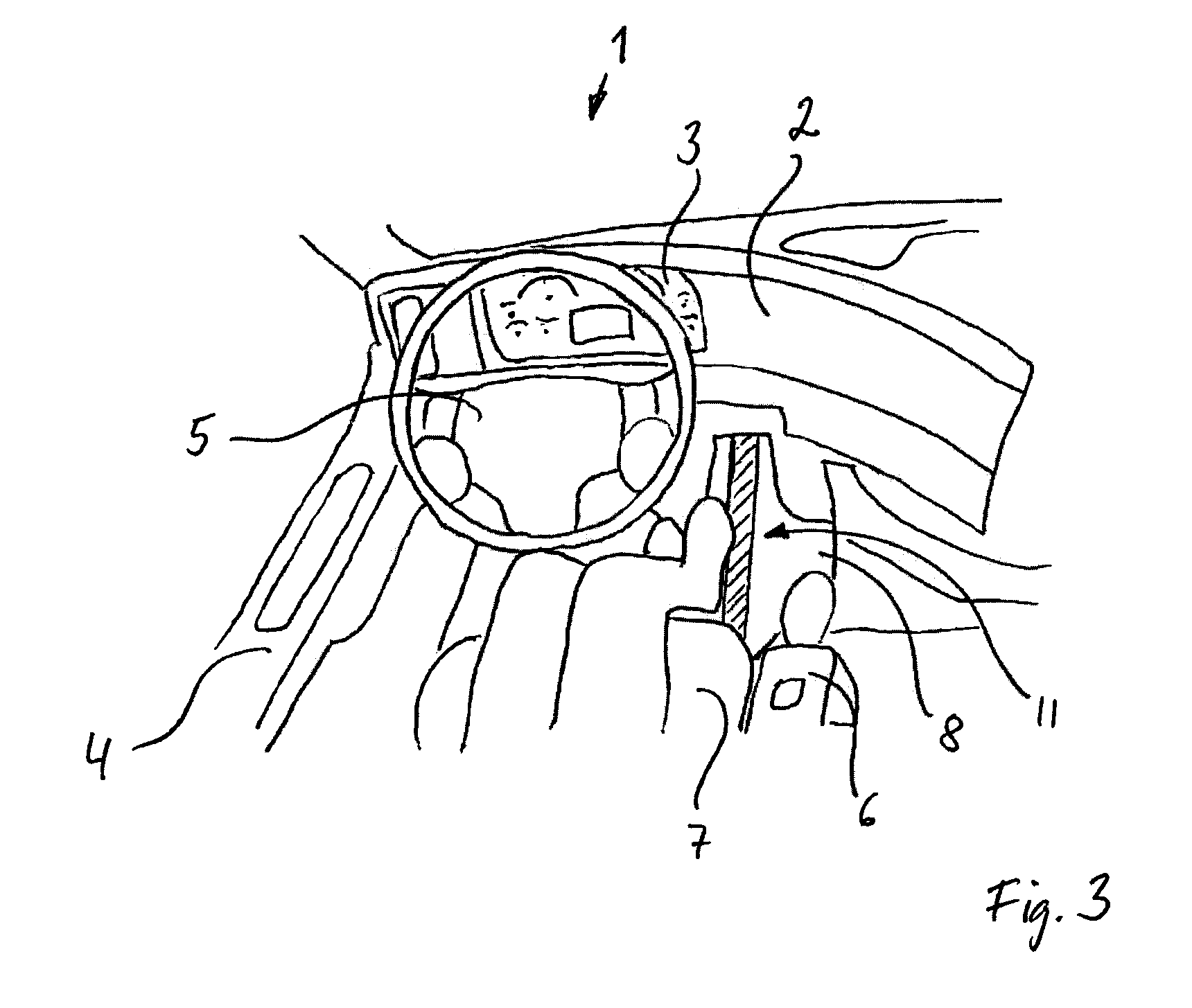An arrangement for displaying information in a vehicle
- Summary
- Abstract
- Description
- Claims
- Application Information
AI Technical Summary
Benefits of technology
Problems solved by technology
Method used
Image
Examples
Embodiment Construction
[0019]The embodiments of the invention with further developments described in the following are to be regarded only as examples and are in no way to limit the scope of the protection provided by the claims. The arrangement is suitable for all kinds of vehicles, but a truck is used to exemplify the arrangement.
[0020]FIG. 1 shows a schematic view of a driver compartment of a truck with a first example of the inventive arrangement. The driver compartment 1 comprises an instrument panel 2 with an instrument cluster 3, a door panel 4, a steering wheel 5, a gear shift lever 6, a seat 7 and a floor mat 8. Further, the legs of the driver are shown. The floor mat 8 comprises a textile which is capable of displaying an information image, a so called smart textile. The information 9, 10, 11 is thus displayed on the floor of the vehicle.
[0021]There are different types of smart textiles known. One type is based on Electroluminescence materials (EL), which converts electrical energy into light wi...
PUM
 Login to View More
Login to View More Abstract
Description
Claims
Application Information
 Login to View More
Login to View More - R&D
- Intellectual Property
- Life Sciences
- Materials
- Tech Scout
- Unparalleled Data Quality
- Higher Quality Content
- 60% Fewer Hallucinations
Browse by: Latest US Patents, China's latest patents, Technical Efficacy Thesaurus, Application Domain, Technology Topic, Popular Technical Reports.
© 2025 PatSnap. All rights reserved.Legal|Privacy policy|Modern Slavery Act Transparency Statement|Sitemap|About US| Contact US: help@patsnap.com



